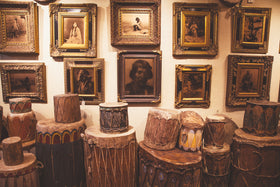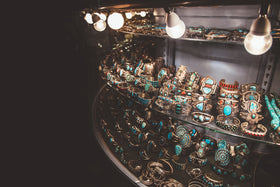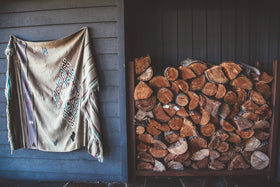Examples of bone and antler awls have been found coast to coast dating back to the late archaic period between 2400 and 2000 BC. Native Americans used them in lieu of a sewing needle to create a hole in which to string sinew when making clothing and moccasins. The three most common awls found in the Plains are the cannon bone, splinter and antler awls.
Cannon Bone Awls
This type of awl is made from the cannon, the lower leg bone of a deer, one of the strongest bones in a deer skeleton. This awl is shorter and shows considerable polish on the distal end from friction against materials as well as on the upper portion from handling. The average length is around 3”.

Cylindrical Awls
Cylindrical awls have been made from several different small bones from deer and other mammals as well as deer antlers. Most of these are highly polished along the entire length. The average length is around 4”.
Splinter Awls
Splinter awls are found at many archaeological sites and were in use throughout the prehistoric periods. They were made of bone splinters, from either buffalo or deer rib bones. Polish from wear may appear from the point and along the entire shaft from handling. Splinter awls required little more than sharpening at one end to be ready for use, therefore were the most common. Lengths can vary from 3” to 12”.
Steel Point Awls
From the Pilgrim’s arrival in the east to the fur traders in the west, sharpened steel points were traded to the Natives and embedded in a piece of antler or bone. This made garment making much simpler. Handles were usually 3-4” and the points from 1-4”.
Awl Cases
Awl cases were used by the Central and Northern Plains Indians. These cases were made by winding or wrapping beads around a tubular shaft, made originally of rawhide/parfleche, and often adorned with suspensions. Few cases and collections have the original bone or steel awl remaining, as these were usually parted long ago. These cases were hung on women’s belts, even after the use of the awl had diminished, as a representation of women’s traditional gear and work.

Photo by Dirk Bakker, courtesy of the Metropolitan Museum of Art.
Coeur d’Alene
Cisco's collection of awl cases and awls appropriately resides in Coeur d’Alene, Idaho. The Coeur d’Alene people lived along the rivers and lakes of this region in a territory of 5,500 square miles descending into Washington and Montana. They were first encountered by French traders in the late 18
th century who gave the natives the name of Coeur d’Alene, meaning “Heart of an Awl,” reflecting their experience with the tribal leaders as shrewd or hard-hearted.

Are you interested in viewing more awl cases and awls? Would you like to add an authentic piece to your collection? Cisco's Gallery has an extensive collection of awl cases and awls available for purchase.
Click here to view the complete collection!











